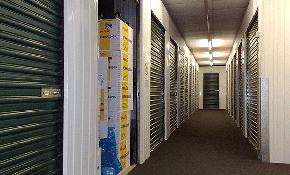Sometimes things don’t add up during Commercial Building Inspections. I’ve encountered some strange issues over the years, and here’s one situation where I’m glad I didn’t accept the initial explanations. It all started with the tomatoes, but ended up somewhere much more typical.
I was engaged to perform a Property Condition Report for the acquisition of four tilt-up concrete industrial buildings adjacent to a river in the US farmlands. The development was constructed in the 1970s and included about 300,000 square feet of warehouse / manufacturing space. The buildings were separated by asphalt paved parking lots.
As part of my initial research, I was informed that portions of the site have experienced some pretty severe settlement at the parking lot and under the buildings. Furthermore, prior to the development of the property, the vacant land was used by an adjacent food processing plant to dispose of tomato pulp. The processing plant would dig 9 foot deep trenches, bury the tomato pulp and put the dirt back. Unfortunately, the geotechnical firm did not hit any of these trench areas when they performed their borings and their recommendations were pretty typical. They did hit ground water at a depth or 10 feet. As such, the buildings and parking lots were developed.
The current owner was very forthright in describing the nature of the problem. During the early 2000s, they had a geotechnical consultant dig some test borings at the areas that were settling. The borings brought up tomato pulp although not what you would expect, in that the tomato pulp was still red and appeared as if it was recently buried. Very little decomposition had taken place. The consultant recommended a concrete slurry injection into the areas that were settling as a solution. Several areas of the site were injected with a concrete slurry mix and that was going to be part of ongoing maintenance as the solution to the tomato issue.
During my building inspection, I saw the areas that were filled with slurry and a few of them looked like they were continuing to settle. Furthermore, there were areas that had not settled at all until recently and then they fell about 8-12 inches in a matter of months. Hmmmm, tomatoes?
Where most involved attributed the tomatoes as the cause for the settlement, a few things did not add up. First, the tomatoes were not decomposed and that is because at 9 feet into the ground, there is no oxygen necessary for decomposition. Second, the areas that were filled with the slurry mix were still settling. This was clearly a situation where we needed to take a few steps back and reevaluate. After a second review of the geotechnical reports and some discussion with the current owner, the real issue was starting to reveal itself.
When the tomato pulp was buried, a backhoe was used to dig 9 foot deep trenches, bury the pulp, and put the dirt back with no compaction. Why did they stop at 9 feet? They hit ground water at 10 feet. The fill soil was settling at a more rapid pace than the native compacted soil. This would explain the areas of settlement matching up with the tomato pulp trenches. But, why were some of the slurry mix repairs failing? This is where it gets interesting.
The slurry mix repairs that had failed were done as part of the asphalt paving repair and seal coating work performed in late spring, after the rain season. During this time the adjacent river was swelled due to the runoff from the local mountains. As such, the ground water would rise from 10 below the surface to about 6 feet below the surface. The tomato pulp was submerged in ground water as was much of the slurry mix. During the summer and fall months the river and ground water dropped, pulling down the uncompacted soil and the still wet slurry mix. The previous winter was one of the wettest on record as was the snow melt which explained why new areas of settlement were now showing up.
Although my client did not purchase this property, the current owner now performs the slurry repairs in the fall months when the ground water is at its lowest point. I was recently in the area and ran into the current owner. He told me that the repairs are now working.
Due to the confidential nature of equity acquisition transactions, the property specifics, location, descriptions and timeframe stated above may have been altered for this publication.

















 Copyright © 2024 ALM Global, LLC. All Rights Reserved.
Copyright © 2024 ALM Global, LLC. All Rights Reserved.